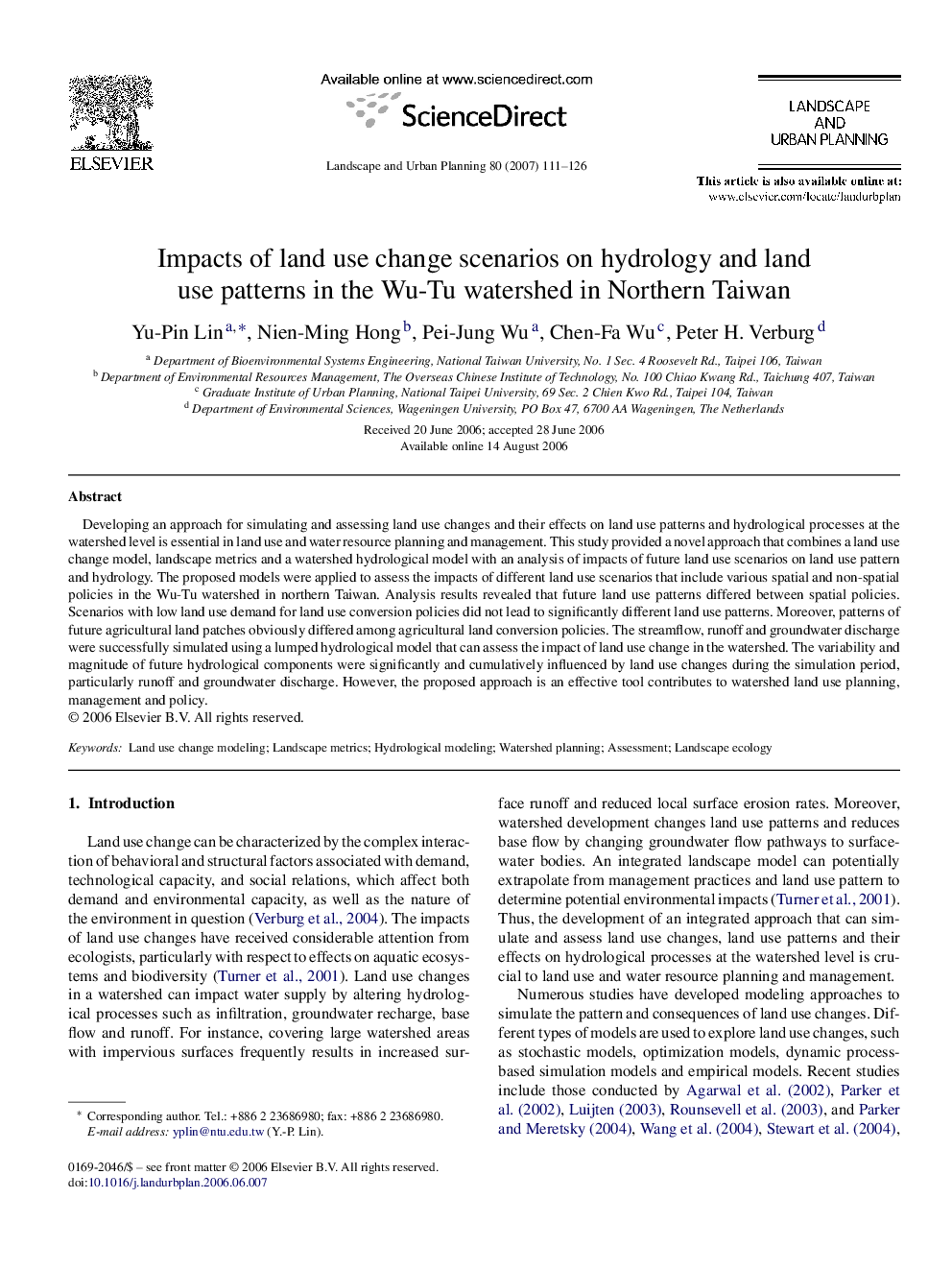| Article ID | Journal | Published Year | Pages | File Type |
|---|---|---|---|---|
| 1050693 | Landscape and Urban Planning | 2007 | 16 Pages |
Abstract
Developing an approach for simulating and assessing land use changes and their effects on land use patterns and hydrological processes at the watershed level is essential in land use and water resource planning and management. This study provided a novel approach that combines a land use change model, landscape metrics and a watershed hydrological model with an analysis of impacts of future land use scenarios on land use pattern and hydrology. The proposed models were applied to assess the impacts of different land use scenarios that include various spatial and non-spatial policies in the Wu-Tu watershed in northern Taiwan. Analysis results revealed that future land use patterns differed between spatial policies. Scenarios with low land use demand for land use conversion policies did not lead to significantly different land use patterns. Moreover, patterns of future agricultural land patches obviously differed among agricultural land conversion policies. The streamflow, runoff and groundwater discharge were successfully simulated using a lumped hydrological model that can assess the impact of land use change in the watershed. The variability and magnitude of future hydrological components were significantly and cumulatively influenced by land use changes during the simulation period, particularly runoff and groundwater discharge. However, the proposed approach is an effective tool contributes to watershed land use planning, management and policy.
Keywords
Related Topics
Life Sciences
Agricultural and Biological Sciences
Ecology, Evolution, Behavior and Systematics
Authors
Yu-Pin Lin, Nien-Ming Hong, Pei-Jung Wu, Chen-Fa Wu, Peter H. Verburg,
